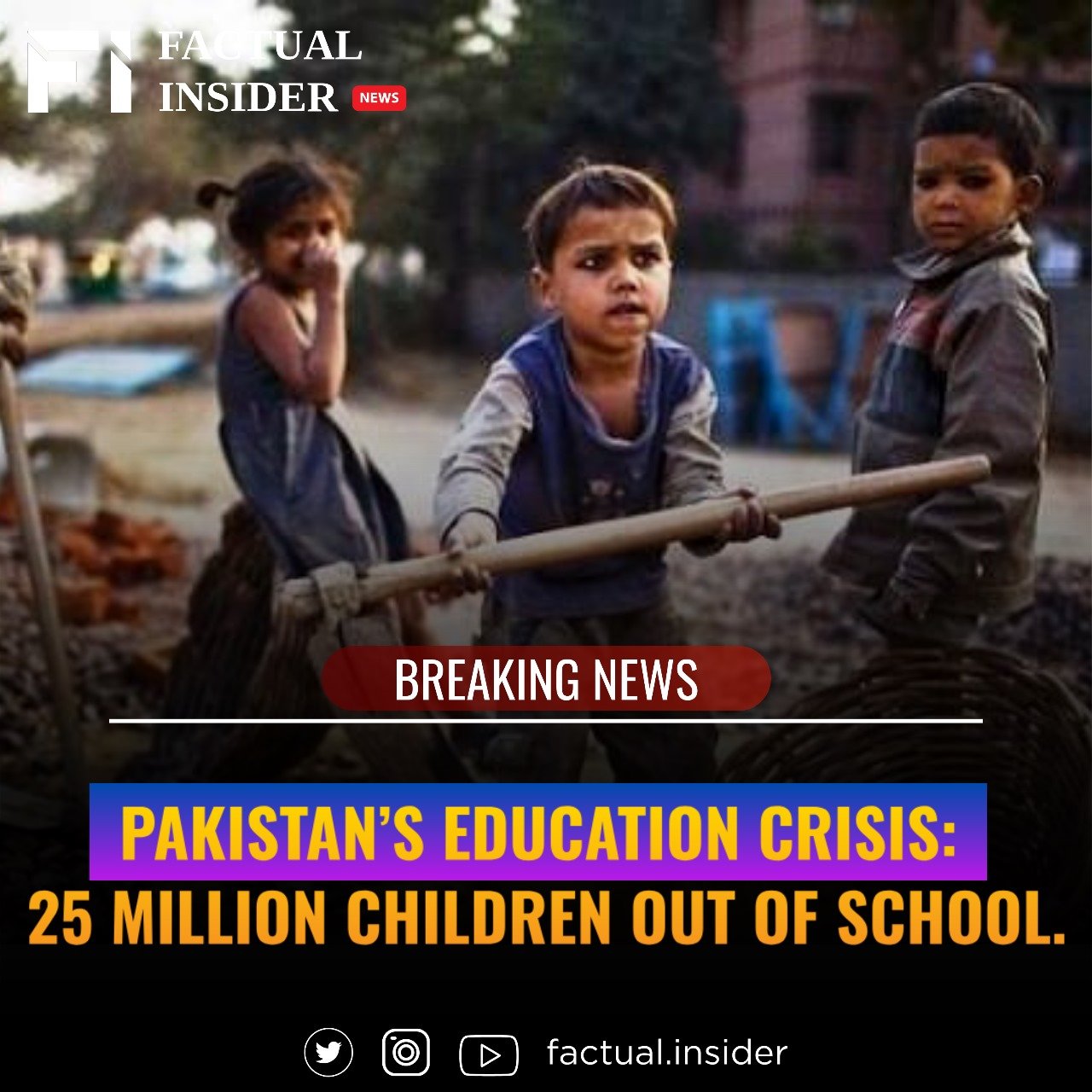Pakistan is grappling with a dire educational crisis, as approximately 25.3 million children aged 5 to 16 are out of school, constituting 36% of the country’s school-age population. This crisis is particularly acute among girls, who account for 53% of out-of-school children, highlighting deep-rooted gender disparities in education. Boys, while slightly better represented, still form 47% of this group.
The issue escalates with age: while 5 million children in the 5-9 age group are not enrolled in schools, the number rises dramatically to 11.4 million for adolescents aged 10-14.Key reasons behind this alarming situation include widespread poverty, where families are unable to afford school fees or other associated costs, and entrenched cultural norms that prioritize boys’ education over girls. Additionally, a lack of adequate school infrastructure, teacher shortages, and low-quality education discourage enrollment and retention. Many rural areas lack nearby schools, forcing children to travel long distances, which further discourages attendance, particularly for girls.
Government data also indicates regional disparities, with provinces like Balochistan and Sindh experiencing the highest rates of out-of-school children. Conflict, natural disasters, and political instability exacerbate the problem, displacing families and disrupting educational opportunities. Efforts to address this crisis, such as introducing free education policies and conditional cash transfer programs, have yielded limited success due to implementation gaps and resource constraints.Comprehensive reforms, including investment in infrastructure, teacher training, and awareness campaigns promoting the importance of education, are essential. The government and stakeholders must urgently act to prioritize education as a fundamental right and address the systemic barriers keeping millions of children out of school.






